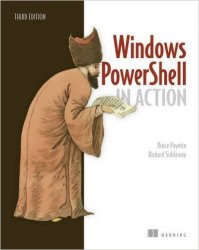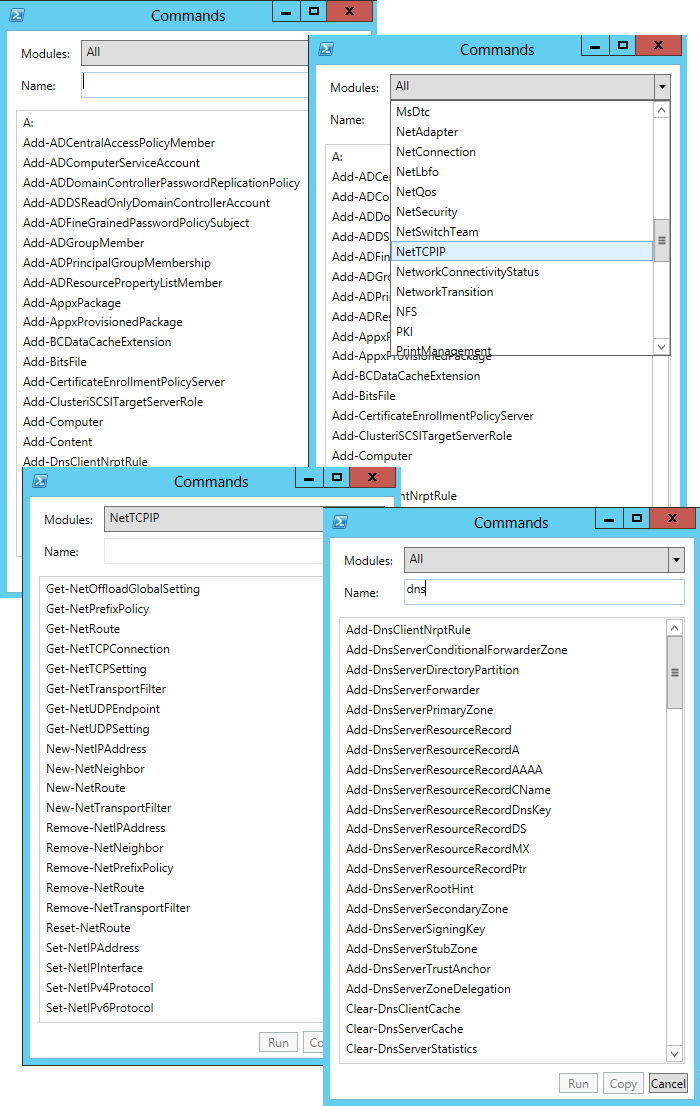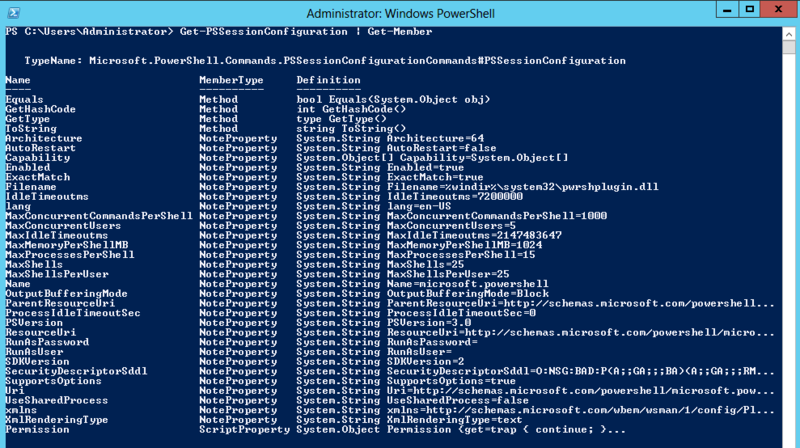Windows PowerShell in action
Скачать книгу (полная версия)
О книге «Windows PowerShell in action»
Amazon.com сообщает:PowerShell replaces cobbled-together assemblies of third-party management tools with an elegant programming language and a powerful scripting shell for the Windows environment. In the tradition of Manning`s ground breaking ‘In Action’ series, this book comes from right from the source. Written by Bruce Payette, one of principal creators of PowerShell, Windows PowerShell in Action shows you how to build scripts and utilities to automate system tasks or create powerful system management tools to handle the day-to-day tasks that drive a Windows administrator`s life. Because it`s based on the .NET platform, PowerShell is also a powerful tool for developers and power users.Windows PowerShell in Action was written by Bruce Payette, one of the founding members of the Windows PowerShell team, co-designer of the PowerShell language and the principal author of the PowerShell language implementation. The book enables you to get the most out of the PowerShell environment. Using many examples, both small and large, this book illustrates the features of the language and environment and shows how to compose those features into solutions, quickly and effectively.This book is designed for anyone who wants to learn PowerShell and use it well. Rather than simply being a book of recipes to read and apply, this book gives you the deep knowledge about how PowerShell works and how to apply it.
На нашем сайте вы можете скачать книгу «Windows PowerShell in action» Payette Bruce бесплатно и без регистрации в формате pdf, читать книгу онлайн или купить книгу в интернет-магазине.
Windows powershell in action bruce payette

Название: Windows PowerShell in Action, 3rd Edition
Автор: Bruce Payette, Richard Siddaway
Издательство: Manning Publications
Год: 2017
Страниц: 904
Формат: PDF
Размер: 11 Mb
Язык: English
Windows PowerShell in Action, Third Edition is the definitive guide to PowerShell, now revised to cover PowerShell 6.
About the Technology
In 2006, Windows PowerShell reinvented the way administrators and developers interact with Windows. Today, PowerShell is required knowledge for Windows admins and devs. This powerful, dynamic language provides command-line control of the Windows OS and most Windows servers, such as Exchange and SCCM. And because it’s a first-class .NET language, you can build amazing shell scripts and tools without reaching for VB or C#.
Windows PowerShell in Action, Third Edition is the definitive guide to PowerShell, now revised to cover PowerShell 6. Written by language designer Bruce Payette and MVP Richard Siddaway, this rich book offers a crystal-clear introduction to the language along with its essential everyday use cases. Beyond the basics, you’ll find detailed examples on deep topics like performance, module architecture, and parallel execution.
The best end-to-end coverage of PowerShell available
Updated with coverage of PowerShell v6
PowerShell workflows
PowerShell classes
Writing modules and scripts
Desired State Configuration
Programming APIs and pipelines
About the Reader
Written for intermediate-level developers and administrators.
Windows Powershell in Action
PowerShell replaces cobbled-together assemblies of third-party management tools with an elegant programming language and a powerful scripting shell for the Windows environment. In the tradition of Manning’s ground breaking «In Action» series, this book comes from right from the source. Written by Bruce Payette, one of principal creators of PowerShell, Windows PowerShell in PowerShell replaces cobbled-together assemblies of third-party management tools with an elegant programming language and a powerful scripting shell for the Windows environment. In the tradition of Manning’s ground breaking «In Action» series, this book comes from right from the source. Written by Bruce Payette, one of principal creators of PowerShell, Windows PowerShell in Action shows you how to build scripts and utilities to automate system tasks or create powerful system management tools to handle the day-to-day tasks that drive a Windows administrator’s life. Because it’s based on the .NET platform, PowerShell is also a powerful tool for developers and power users.
Windows PowerShell in Action was written by Bruce Payette, one of the founding members of the Windows PowerShell team, co-designer of the PowerShell language and the principal author of the PowerShell language implementation. The book enables you to get the most out of the PowerShell environment. Using many examples, both small and large, this book illustrates the features of the language and environment and shows how to compose those features into solutions, quickly and effectively.
This book is designed for anyone who wants to learn PowerShell and use it well. Rather than simply being a book of recipes to read and apply, this book gives you the deep knowledge about how PowerShell works and how to apply it. . more
Get A Copy
Friend Reviews
Reader Q&A
Be the first to ask a question about Windows Powershell in Action
Lists with This Book
Community Reviews
This is the Bible. One of the designers of powershell wrote it. If you want to read the powershell documentation, this is it. There’s things in here that aren’t even documented online. There’s some little mistakes here and there. I wish it was less expensive and more widely known. Copying and pasting from the pdf isn’t great. The forum that comes with the book isn’t that active. Read the book and impress and provoke arguments with the people on stackoverflow. Powershell is very flexible. You can This is the Bible. One of the designers of powershell wrote it. If you want to read the powershell documentation, this is it. There’s things in here that aren’t even documented online. There’s some little mistakes here and there. I wish it was less expensive and more widely known. Copying and pasting from the pdf isn’t great. The forum that comes with the book isn’t that active. Read the book and impress and provoke arguments with the people on stackoverflow. Powershell is very flexible. You can creatively bend it to your will. It comes with windows. I think CS intro classes should use it.
How nerdy is this? Some favorite bits of code (or inspired by):
$a,$b = 1,2
$a = $b = 2
$a,$b = $b,$a
(1,2,3)[-1] # get last one
$
$
get-childitem | foreach <$sum = 0><$sum++><$sum>
invoke-command localhost,localhost,localhost
(Get-Process notepad).foreach(‘Kill’)
ps | foreach name
‘hi.there’ | foreach split .
(ps | sort Handles).where(<$_.Handles -gt 1000>, ‘Until’)
[void] (echo discard me)
$(echo hi; echo there) | measure
using assembly System.Windows.Forms
using namespace System.Windows.Forms
[messagebox]::show(‘hello world’)
$err = $( $output = ls foo3 ) 2>&1
if ( $(if (1 -eq 1) <'yes'>) -eq ‘yes’ )
get-content variable:a | set-content -value ‘there’
workflow work <
foreach -parallel ($i in 1..3) <
sleep 5
«$i done»
>
>
work
# this looks cool
$a = start -NoNewWindow powershell
$b = start -NoNewWindow powershell
$c = start -NoNewWindow powershell
$a,$b,$c | wait-process
netstat -n | select -Skip 4 |
ConvertFrom-String -pn Blank, Protocol,
LocalAddress, ForeignAddress, State |
Select Protocol, LocalAddress, ForeignAddress, State
notepad | echo # wait for it
$p = [PowerShell]::Create() # make another runspace
[void] $p.AddScript
$r = $p.BeginInvoke(); # run in background
$p.EndInvoke($r) # wait
$p.streams.error # see any errors
$p.dispose()
# get and set a variable in a module scope
$m = get-module counter
& $m Get-Variable count
& $m Set-Variable count 33
Best book about PowerShell. Period. It’s massive, it covers everything you’d like it to cover. It’s detailed, it even expresses some designers’ rationale that cause one of another decision during product’s crafting. I consider myself quite a capable script writer, but this book proved me wrong as I was finding something new I didn’t know yet very frequently. If I had to find any flaws (yea, I’m picky) that would be:
* no info about the useful module archives (do not reinvent the wheel!)
* it’s ver Best book about PowerShell. Period. It’s massive, it covers everything you’d like it to cover. It’s detailed, it even expresses some designers’ rationale that cause one of another decision during product’s crafting. I consider myself quite a capable script writer, but this book proved me wrong as I was finding something new I didn’t know yet very frequently. If I had to find any flaws (yea, I’m picky) that would be:
* no info about the useful module archives (do not reinvent the wheel!)
* it’s very detailed about language constructs and low level mechanisms but it lacks some nice real life scenarios that could integrate various features of PS in especially creative way
Anyway, it doesn’t change the fact that this is a very good book. Recommended. . more
PowerShell is not a simple language as you could expect.
If you like me, you would expect, that you can just start reusing your existing knowledge that you’ve gained during your programming career and easily transfer it to PowerShell environment. Unfortunately, it would not be possible.
This book is 1000 pages long and this should not surprise you any more. PowerShell has tons of features and tons of hard-to-understand-from-the-first-glance-and-some-times-even-after-second-one design decisions.
For PowerShell is not a simple language as you could expect.
If you like me, you would expect, that you can just start reusing your existing knowledge that you’ve gained during your programming career and easily transfer it to PowerShell environment. Unfortunately, it would not be possible.
This book is 1000 pages long and this should not surprise you any more. PowerShell has tons of features and tons of hard-to-understand-from-the-first-glance-and-some-times-even-after-second-one design decisions.
For instance, would you expect that function could return null, scalar value or collection based on the number of returned elements? This is actually one of the main features of PowerShell and you should clearly understand this. This usually doesn’t matter unless you’ll try to send such kind of object to .NET API.
Or, can you expect that collection equality means . filtering? This is true as well and 1..10 -eq 4 will return 4, not true of false. So if you’ll try to use this in the if statement that you could unexpected results.
Ok, PowerShell is weird but what about this book? The book itself is good but not perfect.
Main drawback from my perspective is a minimum number of practical examples and weird chapters ordering. There is a tons of stuff that describe one or another feature but in most cases this decription would not be very practical.
Another drawback that most book about PowerShell (and this in particular) are written for ITPros but not for devs. So you would see statements that PowerShell supports closures but you’ll hardly find any internal implementation details.
As an overall conclusion, if you’re going to write something more complex than trivial commands, you definitely need this book or something similar. Otherwise runtime behavior would looks like magic for you.
Встречаем третий PowerShell (часть I)
Стенд
Я собрал под Hyper-V две машины на базе Windows Server 2012 RC, создал лес из одного домена под названием litware.inc . Две машины в домене называются, соответственно, w2012dc1.litware.inc и w2012cl1.litware.inc . На w2012dc1 вертятся доменные службы и DNS, а на w2012cl1 не вертится ничего, кроме, собственно, самой операционки. Также в домене есть пользователь user1 , член группы domain users . Можно, конечно, было установить на вторую машину Windows 8 RC, так сказать, для красоты, но я решил сэкономить немножечко дискового пространства, взяв один родительский виртуальный жесткий диск, а к нему прицепив два дочерних вместо использования двух независимых виртуальных жестких дисков.
Также, должен упомянуть, что не все термины, которые я использую, уже локализованы и есть на языковом портале Microsoft, поэтому я даю их перевод ровно так, как я эти термины понимаю, а в скобках даю оригинальное название на английском языке.
Новые возможности
Сначала давайте их просто перечислим, это:
- Рабочие процессы (англ. Workflows) – это некие процессы, запущенные последовательно или же параллельно, выполняющие комплексные задачи управления. Собственно в PowerShell v3 теперь включена поддержка Windows Workflow Foundation, а сами рабочие процессы PowerShell повторяемы, параллелизуемые, прерываемые и восстановимые.
- Надежные сессии (англ. Robust sessions) – это сессии PowerShell, которые автоматически восстанавливаются после сетевых неурядиц и им подобных прерываний. Также эта технология позволяет отключиться от сессии на одной машине и подключиться к той же сессии на другой.
- Запланированные задания (англ. Scheduled jobs) – задания PowerShell, которые могут выполняться с определенным интервалом, или же в ответ на какое-либо событие.
- Специальная конфигурация для сессии (англ. Custom session configurations) – Для каждой PowerShell-сессии можно предопределить определенный набор параметров и сохранить их в специальном конфигурационном файле, чтобы потом войти в сессию на готовеньком.
- Упрощенный языковой синтаксис (англ. Simplified language syntax) – как утверждается, упрощенный синтаксис позволяет скрипту PowerShell выглядеть менее похожим на программу и более похожим на натуральный человеческий язык.
- Поиск командлетов (англ. Cmdlet discovery) – автоматическая подгрузка модуля, в котором находится командлет, если этот модуль, конечно, установлен на машину.
- Show-Command – это просто один из новых командлетов, с которого мы, пожалуй, и начнем.
Show-Command
После его запуска, без параметров, появляется окно, от которого веет грандиозностью и шиком:
Если раньше приходилось искать по TechNet тот или иной командлет, а то и вовсе использовать объекты .NET, то тут вот пожалуйста, все модули, все командлеты, ищи – не хочу.
Вот, извольте, командлеты управления DNS-сервером и службой DNS-клиента, а если выбрать какой-либо модуль, например сетевой, можно узнать командлеты настройки таблицы маршрутизации или, допустим, параметры TCP/IP сетевых интерфейсов.
Также я пробовал поискать слова «share», «user», «acl», «policy», «adapter», и так далее, и тому подобное, попробуйте, это интересно.
Cmdlet discovery
Связанное с предыдущим, но напрямую не зависящее. В PowerShell v2 в Windows Server 2008 R2, для того, чтобы производить те или иные операции, необходимо подключать тот или иной модуль, PowerShell v3 же автоматически определяет, какой модуль отвечает за запуск командлета и в фоне этот модуль подгружает, безо всяких вопросов.
Сравним. Я решил получить список групповых политик домена, если я в PowerShell v2 пытаюсь их загрузить:
То мы получаем ошибку, потому что не подгружен модуль GroupPolicy:
Теперь, если повторить, то все проходит нормально:
В PowerShell v3 же все прекрасно изначально:
Simplified language syntax
Тут, как мне показалось, разработчики решили приблизить язык к SQL, ну по крайней мере прослеживается некая аналогия. Дело в том, что они представили новые синтаксисы для командлетов Foreach-Object и Where-Object . Хотя практическая ценность Foreach :
на мой взгляд, сомнительна.
Другое дело Where :
уже ничего, безо всяких скобочек фигурных с долларами-кавычками.
Также появилась пара новых операторов: -In и -NotIn , указывающие на диапазон. С ними, я думаю, все более, чем понятно:
Custom session configurations
Самое замечательное новшество, о котором я хочу рассказать в первой части, это конфигурация сессии в связке с делегированием административных полномочий. Собственно файл с конфигурацией является файлом с расширением .pssc, в котором всего лишь содержится хэш-таблица свойств и значений: авторство, язык, переменные, определения функций, прочее. В самой же конфигурации сессии есть и иные свойства:
Появится картинка, похожая на эту:
Видите сколько настраиваемых параметров? Можно даже сравнить с картинкой, которая появится при запуске этой команды в PowerShell v2 и ощутить разницу.
Но как это использовать? А сейчас покажу, признаться, я достаточно долго ковырялся, чтобы написать вот эти несколько строчек. Итак, последовательно выполняем:
Заметьте, я ограничил конфигурацию лишь модулем DnsServer и лишь командлетами, начинающимися на Show-DnsServer , это гарантирует, что хотя сама оболочка и будет выполняться с привилегиями пользователя administrator@litware.inc , но удаленный пользователь user1 с удаленной машины w2012cl1 не сможет сделать ничего, кроме разве что этого:
Удобная штука, правда? Ограничив модули и командлеты внутри PowerShell, мы легко и непринужденно можем внутри нашей команды администраторов одних сотрудников сделать ответственными за DNS, других за сеть, а пользователям, например, дать право делать снэпшоты их машин Hyper-V внутри VDI, и при этом никто не будет знать учетные данные пользователя, из-под которого выполняется задача! А готовый конфигурационный файл просто переносится из одного места на все другие сервера со сходными функциями.
В следующей части мы пойдем далее, а вернее вверх по списку, разберем надежные сессии, запланированные задания и, конечно, рабочие процессы. Ну и, быть может, чуть-чуть коснемся новой PowerShell ISE, там тоже есть, на что посмотреть.
























